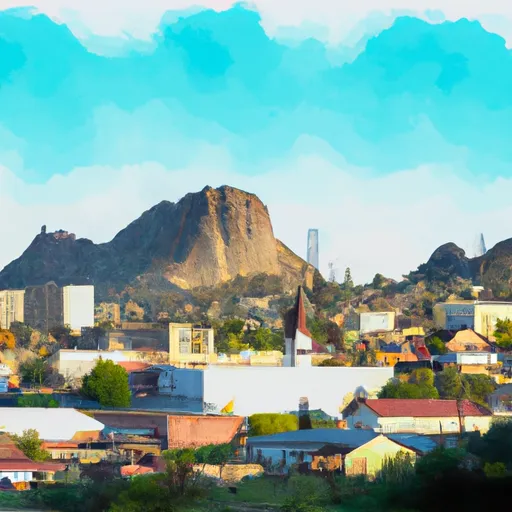-
 Snoflo Premium
Snoflo Premium
Get unlimited access to all our content
With no Ad interruptions! - Start Your Free Trial Login with existing account
Rubidoux
Eden Index
Climate
8.7
•
Recreation
4.5
•
Community
2.6
•
Safeguard
5.7/10

Rubidoux, California is a small community located in Riverside County, approximately 60 miles east of Los Angeles. The area experiences a Mediterranean climate with hot, dry summers and mild, wet winters. Summers are typically hot with temperatures often exceeding 100°F, while winters are cool with temperatures averaging in the mid-60s°F.
Hydrology constituents in Rubidoux include the Santa Ana River, which flows nearby, providing a vital water source for the region. The river also offers recreational opportunities such as fishing, kayaking, and canoeing. Rubidoux also benefits from several smaller creeks and streams that flow through the area, contributing to the local hydrology.
Outdoor recreation opportunities in Rubidoux are abundant. The nearby Santa Ana River provides numerous hiking and biking trails, allowing residents and visitors to explore the natural beauty of the surrounding area. Box Springs Mountain Park, situated adjacent to Rubidoux, offers scenic trails for hiking and mountain biking, providing stunning views of the city and the surrounding hills. Additionally, there are several parks within the community that provide picnic areas, playgrounds, and sports fields for outdoor activities.
What is the Eden Index?
The Snoflo Eden Index serves as a comprehensive rating system for regions, evaluating their desirability through a holistic assessment of climate health, outdoor recreation opportunities, and natural disaster risk, acknowledging the profound impact of these factors on livability and well-being.
Climate Health Indicator (CHI): 8.7
Rubidoux receives approximately
269mm of rain per year,
with humidity levels near 75%
and air temperatures averaging around
19°C.
Rubidoux has a plant hardyness factor of
9, meaning
plants and agriculture in this region tend to thrive here all year round.
By considering the ideal temperature range, reliable water supplies, clean air, and stable seasonal rain or snowpacks, the Climate Health Indicator (CHI) underscores the significance of a healthy climate as the foundation for quality living.
A healthy climate is paramount for ensuring a high quality of life and livability in a region, fostering both physical well-being and environmental harmony. This can be characterized by ideal temperatures, reliable access to water supplies, clean air, and consistent seasonal rain or snowpacks.
Weather Forecast
Streamflow Conditions
Santa Ana
Area Rivers
Santa Ana
Snowpack Depths
Santa Ana
Reservoir Storage Capacity
Santa Ana
Groundwater Levels
Recreational Opportunity Index (ROI): 4.5
The Recreational Opportunity Index (ROI) recognizes the value of outdoor recreational options, such as parks, hiking trails, camping sites, and fishing spots, while acknowledging that climate plays a pivotal role in ensuring the comfort and consistency of these experiences.
Access to outdoor recreational opportunities, encompassing activities such as parks, hiking, camping, and fishing, is crucial for overall well-being, and the climate plays a pivotal role in enabling and enhancing these experiences, ensuring that individuals can engage in nature-based activities comfortably and consistently.
Camping Areas
| Campground | Campsites | Reservations | Toilets | Showers | Elevation |
|---|---|---|---|---|---|
| March ARB Military | None | 1,509 ft | |||
| El Cariso | 24 | 2,568 ft | |||
| Wildomar | 11 | 2,456 ft | |||
| Upper San Juan | 18 | 1,761 ft | |||
| Ortega Flats - Caspers Wilderness Co Park | None | 388 ft | |||
| ONeill Regional Park | 85 | 1,110 ft | |||
| Lake Elsinore | 400 | 1,286 ft | |||
| Caspers Wilderness Park | None | 387 ft | |||
| Blue Jay | 50 | 3,358 ft | |||
| Live Oak - Caspers Wilderness Co Park | None | 387 ft |
Catastrophe Safeguard Index (CSI):
The Catastrophe Safeguard Index (CSI) recognizes that natural disaster risk, encompassing floods, fires, hurricanes, and tornadoes, can drastically affect safety and the overall appeal of an area.
The level of natural disaster risk in a region significantly affects safety and the overall livability, with climate change amplifying these risks by potentially increasing the frequency and intensity of events like floods, fires, hurricanes, and tornadoes, thereby posing substantial challenges to community resilience and well-being.
Community Resilience Indicator (CRI): 2.6
The Community Resilience Indicator (CRI) recognizes that education, healthcare, and socioeconomics are crucial to the well-being of a region. The CRI acknowledges the profound impact of these elements on residents' overall quality of life. By evaluating educational resources, healthcare accessibility, and economic inclusivity, the index captures the essential aspects that contribute to a thriving community, fostering resident satisfaction, equity, and social cohesion.

